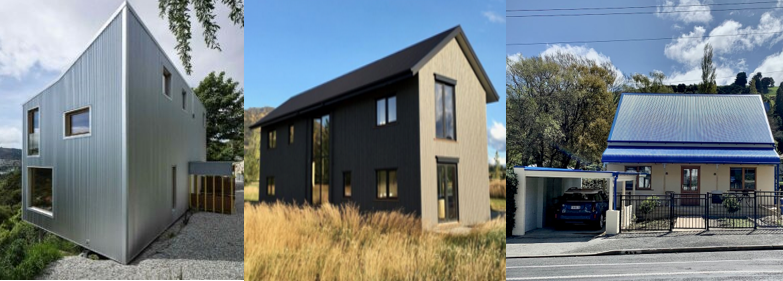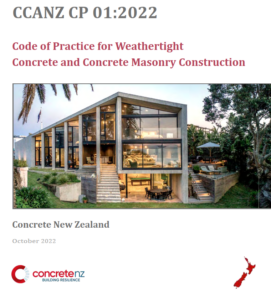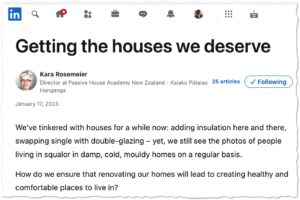Something I learned from my dad growing up was to do something right … so you only had to do it once. When you do a half-arsed job, you often have to do it over again. I was reminded of this when Jonathan Holmes (VIA Architects) recently pointed out a great technical paper from the UK. It dates back from …
How Luggate Memorial Centre got made

New Zealand’s first Passive House community facility—and it stands in a tiny rural community of a few hundred people. How did this bold project get made by a small council at the furthest end of the motu? Sustainable Engineering talked to the people involved in the rebuild of the Luggate Memorial Hall, seeking insights that might help other non-residential projects …
Passive House in NZ: certification and rate of uptake rising

Sustainable Engineering is often asked how many PHI certified Passive House buildings there are in New Zealand. So a while back, we added a counter to our website here. We were recently asked about how the rate of uptake is changing. Like a good engineer, I answered the question with a graph: Interesting! I have provided lines for total projects …
Exceptional airtightness results achieved

We’re aware builders are competing to get the lowest air leakage results (well below the 0.6 ACHn50 Passive House requirement). It’s good fun: we have some great Passive House builders with considerable experience and commitment and they deserve the spotlight. So who has achieved the lowest blower door test results in New Zealand? There are currently three certified Passive House …
RIBA Passivhaus Overlay is essential reading

The Royal Institute of British Architects (RIBA) has produced an extremely well done resource that will be very helpful for New Zealand Passive House designers and architects too. The Passivhaus Overlay document offers guidance on how to implement Passive House design through each stage of works. Some excellent graphics have been created (below), illustrating how deeply integrating Passive House processes …
New concrete code of practice published

Concrete New Zealand has published a new document, CP01:2022 – Code of Practice for Weathertightness. It’s available to download from the Technical Documents section. Note that this 2022 update is an Alternative Solution (still!) while the details in the 2014 version are Acceptable Solutions according to the New Zealand Building Code. We’re ever so excited to see this published as …
Benefits of high-performance housing spread wide

Retrofitting buildings to the EnerPHit standard and designing new ones to certified Passive House levels of performance lowers cost to society and produces lots of co-benefits (ie shared by society and the individuals who live or work etc in those buildings). The issue is, who pays? Right now, the entire cost of designing and constructing incredibly energy efficient buildings with …
Funding and quality assurance the way to ensure successful energy retrofits

Successful energy retrofits are complex. This should be no surprise: building are complex and fixing one already built is harder than building it properly in the first place. It is very difficult to obtain good results with an approach that depends on tick boxes and rules of thumb. An EnerPHit plan is needed, which involves a full energy model—or something …
Safety tips and rescue remedies for Passive House design
Allow for mistakes and changes in the course of the design (and build) process. That, in a nutshell, is possibly the best piece of advice we can offer to Passive House designers. It’s based on the many projects we either design, advise on or certify. In a perfect world, you’ll never need to use the following tips. But as is …